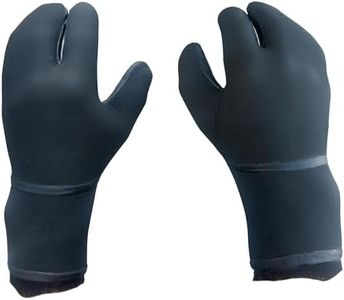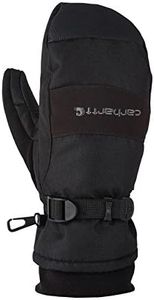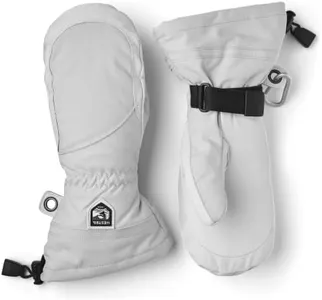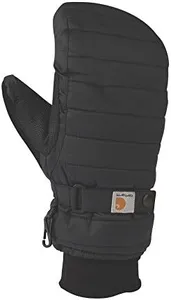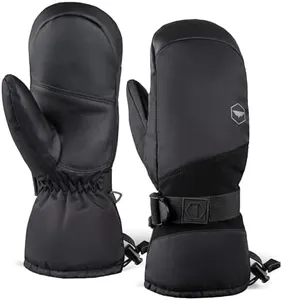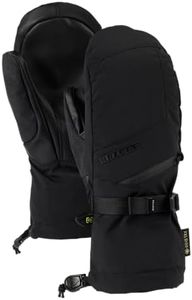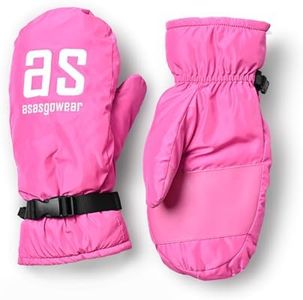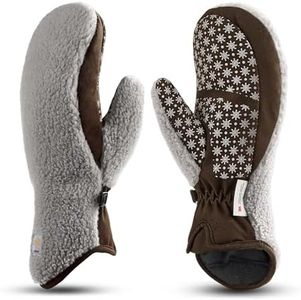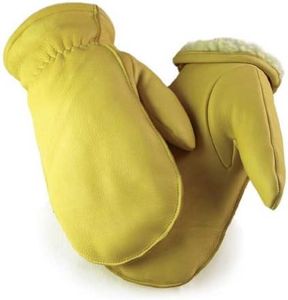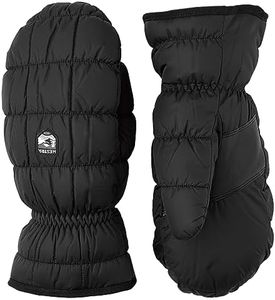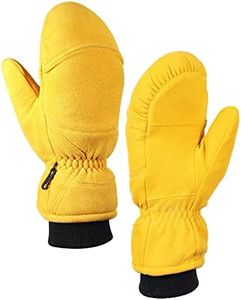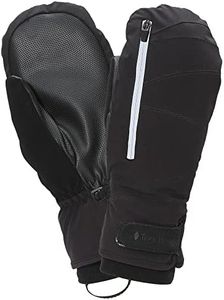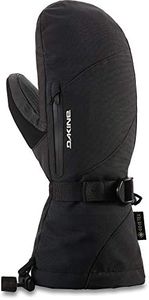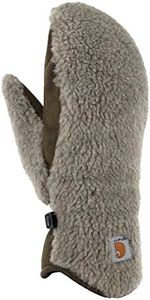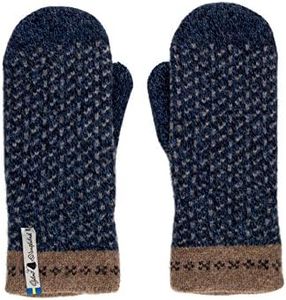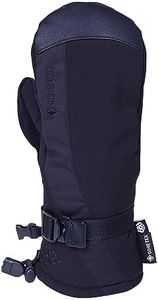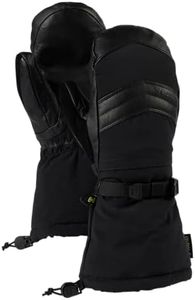10 Best Warmest Mittens 2025 in the United States
Our technology thoroughly searches through the online shopping world, reviewing hundreds of sites. We then process and analyze this information, updating in real-time to bring you the latest top-rated products. This way, you always get the best and most current options available.

Our Top Picks
Winner
Carhartt Men's W.P. Waterproof Insulated Mittens, Black, XX-Large
The Carhartt Men's W.P. Waterproof Insulated Mittens combine several features that make them suitable for anyone needing warm, waterproof handwear during cold weather. The durable polytex shell is a strong point, offering good protection against the elements, while the Digital-grip palm and stick-grip fingers enhance your grip, whether you're holding tools or just steering your car. The FastDry technology lining is a highlight as well, efficiently wicking away sweat to keep your hands dry and comfortable even after extended use. Plus, the waterproof insert ensures your hands stay dry in wet conditions, making them a great choice for outdoor activities like skiing or shoveling snow.
While these mittens are well-insulated, some users might find that the XX-Large size could be a bit larger than expected, which may affect the fit for those with average-sized hands. Additionally, the mittens are designed for hand washing, which can be less convenient compared to machine-washable options. The fleece cuff with an adjustable wrist strap is a nice touch for added warmth and comfort, but the cuff style might not fit everyone’s preference.
These mittens are a solid choice for anyone looking for reliable warmth and waterproofing in their winter gear, particularly for outdoor enthusiasts. Users should consider the fit and care instructions to ensure they meet their specific requirements.
Customer Highlights
A summary of real customer reviews to highlight what shoppers are saying!Hestra Heli Ski Womens Glove - Classic Leather Snow Mitten for Skiing, Snowboarding and Mountaineering (Women’s Fit) - Pale Grey/Offwhite - 8
The Hestra Heli Ski Women's Glove is a top choice for those who demand high performance in cold conditions, such as freeriders, ski instructors, and mountain guides. Its main strengths lie in its durable materials, with a windproof, water-resistant, and breathable HESTRA Triton fabric on the backhand and robust Army Goat Leather on the palm and fingers. This combination ensures longevity and protection against the elements.
The mitten is designed to retain warmth effectively, even in wet conditions, thanks to its high insulating polyester fiber. This makes it the warmest mitten in the Heli Ski Female line, which is great for extremely cold environments. Additionally, the removable lining allows for adaptability, so you can switch to different liners based on the weather conditions. The elastic strap with Velcro closure and snow lock provide convenience and ensure that heat is retained while keeping the cold out.
The Eagle Grip design offers a comfortable and natural grip, enhancing usability. On the downside, the glove requires hand washing, which might be less convenient for some users. Also, the fit is specifically tailored for women, which may not be suitable for all hand sizes. However, if you are looking for a durable, warm mitten with a range of convenient features, the Hestra Heli Ski Women's Glove is a solid option.
Customer Highlights
A summary of real customer reviews to highlight what shoppers are saying!Carhartt Women's Quilts Insulated Mitten, BLACK, M
The Carhartt Women's Quilts Insulated Mitten in black, size M, offers several features that make it a strong contender for those in need of warm mittens. The quilted design provides good insulation, and the FastDry technology lining helps in wicking away sweat, ensuring your hands stay dry. The stretch fleece cuff and elastic wrist offer a snug fit, while the adjustable snap closure adds an extra layer of security to keep out the cold. The mitten also includes practical features like a nose wipe, which can be very handy in cold weather.
However, the 100% polyester fabric may not provide the same level of warmth as some other high-end materials like down or Thinsulate. Additionally, there is no mention of waterproofing, which could be a drawback if you need mittens for wet conditions. The care instructions recommend hand washing only, which may be inconvenient for some users.
These mittens are a good choice for everyday use in dry, cold weather, but might not be the best option for extremely harsh or wet conditions.
Customer Highlights
A summary of real customer reviews to highlight what shoppers are saying!Buying Guide for the Best Warmest Mittens
When it comes to picking the warmest mittens, it's essential to consider various factors that will ensure your hands stay warm and comfortable in cold weather. Mittens are generally warmer than gloves because they allow your fingers to share warmth. However, not all mittens are created equal, and understanding the key specifications can help you make the best choice for your needs.FAQ
Most Popular Categories Right Now
